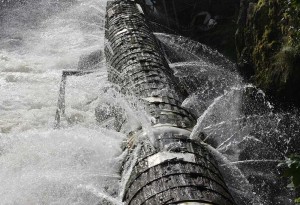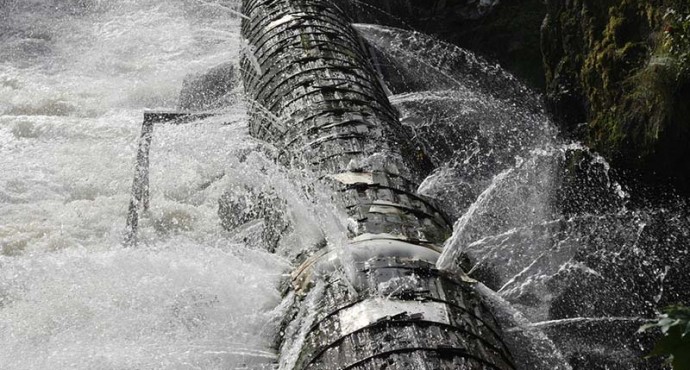The Different Types of Leak Detection Equipment
Everything Leaks. Where there is a sealed system; there is a leak. The difference lies in the rate at which the leak occurs: it could be at the rate of 1lb per second or as slow as 1oz every few years. The fact is: every mechanical pressurized system has joints. Over time, environmental factors can lead to flaws in these joints. In the majority of cases, these flaws are often too small to see & as a result the leaks go unnoticed for long periods. Specialized leak detection techniques and equipment must be used to detect leaks in order to curtail them. Failure to do so can not only lead to huge financial losses, but, depending on the material leaking there may also be environmental factors.
In this article, we will look a some modern leak detection equipment and techniques as well as their pros and cons. We will also study the kind of leaks each of the methods is suitable for. Finally, we shall discuss why it is important to have good leak detection and repair programs in place.
Classification of leak detection equipment
Leak detection equipment can be classified on the basis of several factors. As far as classification on the basis of amount of human intervention required is concerned; leak detection equipment can be of the following types:
- Automated Leak Detection-These can be considered the ‘complete leak monitoring’ systems. They are most suited for gas, refrigeration, petroleum or water leaks. Once installed, they have no need of manual operators. Examples include: Fiber optic and cable sensors.
- Semi-automated Leak Detection-These systems require a bit of human intervention. Examples of these are Statistical and digital signal processing software leak detection systems.
- Manual Leak Detection– These systems completely need to be monitored and operated by humans. Thermal imagers and LIDAR (Light detection and ranging) systems are examples of these.
Leak detection can also be direct or indirect. Direct leak detection is done through Visual or handheld devices for sensing and measuring leaks. Indirect methods are based on mathematical calculations that rely upon changes in pipe parameters like flow rate, change in pressure and so on.
A third way of classifying leak detection methods is Hardware based or software based.
- Hardware Leak Detection– Hardware leak detection methods rely on special sensing devices which can be further classified as Acoustic, Optical, Cable, Soil Monitoring or Ultrasonic.
- Software Leak Detection: The embedded algorithms in software leak detection equipment continually monitor the pipes for changes in parameters like pressure, temperature, flow rate etc. Different approaches may be used for detecting leaks such as mass/volume balance, real time transient modeling, digital signal processing etc.
Non technical methods- The nontechnical means of leak detection rely upon sight, sound and hearing abilities. Smelling of gas leaks, visual inspections and hearing sounds of larger leakages are a few examples of these methods. Dogs are often utilized for this purpose, given their superior smelling and hearing abilities. Soap bubble screening is used for smaller leaks along valves and pipes in refrigeration units etc.
Advantages of non technical methods of leak detection:
(i) No special equipment is required. (ii)The leaks can be immediately localized upon detection.
Disadvantages: (i) On the downside, these methods require experienced personnel. The efficiency of detection depends on the personnel’s meticulousness.
(ii)The pipelines need to be accessible, so this method is ruled out when pipelines are buried or their exact location is not known when the network maps are missing or poorly made.
 Comparison of Modern Leak Detection equipment
Comparison of Modern Leak Detection equipment
- Acoustic– This acoustic method is used for gas leaks, water leaks and other leaks in pressurized plumbing systems. Acoustic sensors are fitted inside the pipeline and continuous monitoring may also be done of sensors placed outside the pipeline at regular intervals. Naturally, the sensitivity of the sensors decides the efficiency of this method. Also, if the sensors are placed at very large distances from each other then the chances of leaks going undetected are high. Advantages: (i) The acoustic systems can help pinpoint exact location of the leaks and also determine its size (ii) This method is suitable for old as well as new pipelines. (iii) Continuous mode of operation or real time monitoring is feasible. (iv) The technique can be fully automated. Disadvantages: (i) Financial costs are high since numerous sensors may be needed. (ii) Flow noise conditions and high background noise can mask the noise of leaks.
- Thermal– Thermal imaging cameras are used for detecting water leaks on floors, walls, roofs, as well as gas or water leaks in buried pipelines. The method mainly utilizes monitoring temperature differences between the leaked gas/liquid and that of its surrounding environment. This is a passive method of leak detection that needs manual intervention. Advantages: (i) It is a minimally destructive method; it can detect smallest leaks with minimal disruption. Disadvantages: (i) Some gas leaks may be missed especially if there is no temperature difference between the escaped gas and environment. (ii) For detecting very minute leaks, thermal imagers required may turn out expensive.
- Tracer Compounds– This is a soil monitoring method used mainly for gas leaks in buried pipelines. It requires adding non-hazardous, volatile gas (such as helium) that exits the pipeline at the exact spot where the leak occurs. Advantages: (i) The method has very low false alarm rates (ii) It has high sensitivity. Disadvantages– (i) It can be a bit expensive since tracer elements have to be continuously added to the pipeline. (ii) The method is not suitable for exposed pipes.
- Cable sensors– Electronic cable sensors are suitable for determining gas/refrigerant and water leaks. The sensors are built using materials that react to changes. When a leak occurs, the resistance or capacitance of the sensor changes and these can be monitored to detect leaks. Advantages: It gives fast response times. (ii) It has high sensitivity. Disadvantages: (i) Higher cost of retrofitting to existing pipes and (ii) The method cannot determine the actual leak size.
Why Opt for Professional Leak Detection program
Effective leak detection is an important part of asset management. As can be seen, there are numerous leak detection technologies available today at your disposal, however, a customized program is often the best solution.
The benefits of professional leak detection and repairs include:
- Improved efficiency
- Lower costs of operation
- Lower potential of contamination
- Extended life of facilities
- Reduced water outage events
- Reduced potential property damages
- Reduced loss of human life or injuries
- Increased potential savings on utility bills
Large commercial facilities can also benefit with:
- Increased know-how of their distribution systems
- More efficient use of existing systems and
- Quicker response times
The benefits of hiring a professional for leak detection
- Professionals inspect valves and hydrants in the distribution system
- They help update existing distribution maps and systems
- They have superior equipment for ongoing monitoring and analysis
- They help inspect, clean, line and perform other maintenance tasks to prevent leaks and ruptures.
Old or poorly constructed pipelines, the inability to determine exact location of pipes and cables due to non-existent or poorly maintained network plans and inadequate corrosion protection etc can lead to huge financial losses or environmental damage. Preventive leak detection must hence be used for commercial as well as residential properties. Leak detection professionals are capable of spotting and fixing leaks with minimal disruption to avert hefty bills and potential property damage
At Advanced Maintenance LTD we can offer both emergency leak detection for home & business & build customised plan to help save your business money in the long term by preventing leaks which can cause downtime & loss of output.


